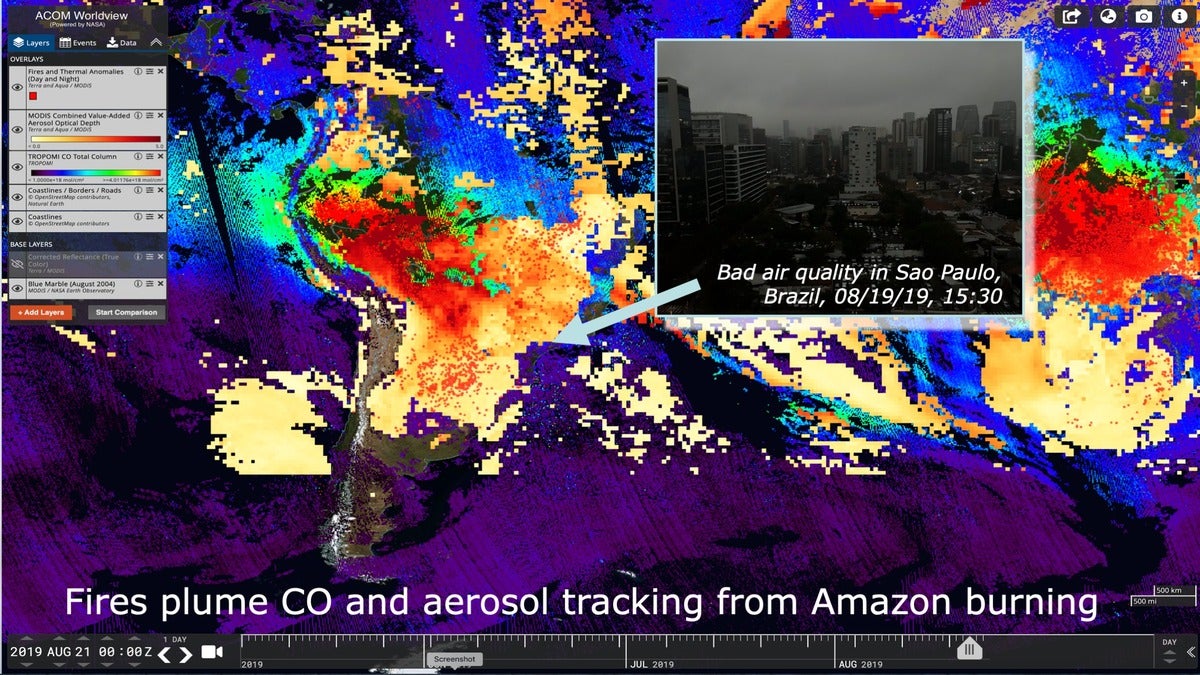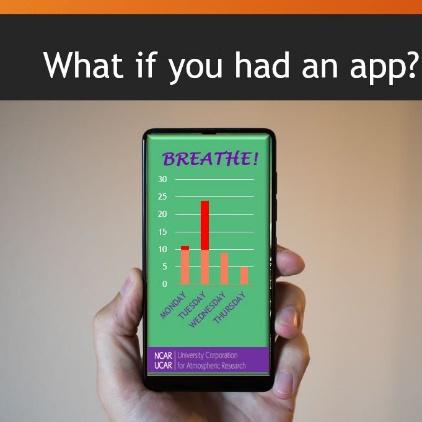ACOM Data Visualization Tools
The NASA-developed Worldview tool is designed to display global data in real time as layers. Each layer can be adjusted by the user to highlight its scientific value such as making the layer semi-transparent for comparison with a complementary data set. A version of Worldview was installed at ACOM (https://worldview.acom.ucar.edu) and ACOM’s global chemical predictions from the Whole Atmosphere Community Climate Model (WACCM) have been added as a new suite of layers. This allows integration of the simulations with a large number of satellite products thus aids the interpretation and evaluation of the model. As a demonstration of this capability, we show in Figure 1 below a snapshot from Worldview where the MOPITT CO total column over the Amazon has been overlaid with surface carbon monoxide concentrations from WACCM forecasts.

U-Innovate was a contest intended to stimulate tech transfer from NCAR labs out into the private sector. The ACOM entry in this contest won third-place. The proposal was to create an app for a mobile device that could download air quality forecasts that could help people make decisions about their activities with more information about the risks to their health (Figure 2). Global chemical predictions from WACCM are used as input and the app queries an ACOM server to create a user-friendly display of local air quality conditions. Development of this app is underway and appropriate marketing opportunities are being explored.

Contact
Please direct questions/comments about this page to:
Carl Drews
NSF NCAR | Research IT | ACOM